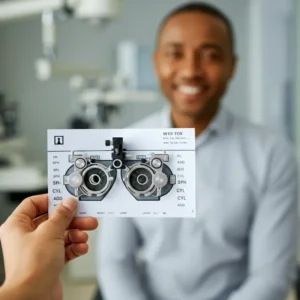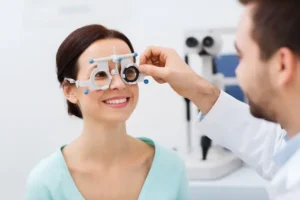What if we could treat retinal diseases with precision using light-activated microscopic particles?
The realm of ophthalmology has witnessed remarkable advances in recent years, with photodynamic nanoparticles emerging as a groundbreaking solution for treating various retinal conditions. These innovative particles combine the power of light-sensitive materials with nanotechnology, offering new hope for patients with degenerative eye diseases.
The Science Behind Photodynamic Nanoparticles
Basic Principles
Photodynamic therapy using nanoparticles works through a simple yet effective mechanism. When specific wavelengths of light activate these tiny particles, they generate reactive oxygen species that can target damaged or diseased cells while leaving healthy tissue unharmed.
Composition and Structure
Modern photodynamic nanoparticles typically consist of:
A light-sensitive core material, A biocompatible outer shell, Targeting molecules for precise delivery, Photosensitizing agents.
Applications in Retinal Treatment
Age-Related Macular Degeneration
Photodynamic nanoparticle therapy shows particular promise in treating age-related macular degeneration (AMD). The particles can specifically target abnormal blood vessels that characterize wet AMD, reducing vision loss risk.
Diabetic Retinopathy
For diabetic retinopathy patients, photodynamic nanoparticles offer targeted treatment of damaged blood vessels without affecting the surrounding healthy retinal tissue.
Benefits and Advantages
Enhanced Precision
The nanoscale size of these particles allows for:
Better tissue penetration, More precise targeting, Reduced collateral damage, Improved treatment outcomes.
Reduced Side Effects
Traditional treatments often cause widespread damage to healthy tissue. Photodynamic nanoparticle-based treatments minimize these side effects through their targeted approach.
Treatment Process
Pre-Treatment Phase
The process begins with a thorough eye examination and customized treatment planning based on the specific retinal condition.
Administration and Activation
Doctors administer the photodynamic nanoparticles through various methods, including:
- Intravenous injection
- Direct eye injection
- Topical application
Post-Treatment Care
Patients require specific post-treatment care, including:
- Light exposure management
- Regular follow-up visits
- Progress monitoring
Future Developments
Research Directions
Scientists continue exploring new applications and improvements for photodynamic nanoparticles, including:
Enhanced targeting mechanisms, Novel particle compositions, Combined treatment approaches.
Here you like Gold Nanoparticles in Retinal Disease Diagnosis
Clinical Trials
Ongoing studies evaluate the long-term effectiveness and safety of these treatments across different patient groups.
Conclusion
Photodynamic nanoparticles represent a significant leap forward in retinal treatment. Their ability to provide targeted therapy while minimizing side effects makes them a promising solution for various eye conditions. As research continues and technology advances, we can expect even more effective treatments to emerge from this innovative approach.
Frequently Asked Questions
Q1: How safe are photodynamic nanoparticles for eye treatment?
Clinical studies show these treatments have a strong safety profile. The particles are designed to be biocompatible and break down naturally in the body. However, like all medical treatments, doctors must carefully evaluate each patient’s suitability.
Q2: How long does a typical treatment session take?
A standard treatment session usually lasts 30-60 minutes, including preparation time. However, the actual light activation phase typically takes only 15-20 minutes.
Q3: Are multiple treatments necessary?
Most patients require 2-3 treatments spaced several weeks apart for optimal results. The exact number depends on the condition’s severity and response to treatment.
Q4: What side effects might occur?
Common side effects are mild and temporary, including:
- Light sensitivity for 24-48 hours
- Mild eye irritation
- Temporary vision changes These typically resolve within a few days.
Q5: How soon can patients resume normal activities?
Most patients can resume regular activities within 24-48 hours, though they should avoid bright light exposure for several days as advised by their doctor.




